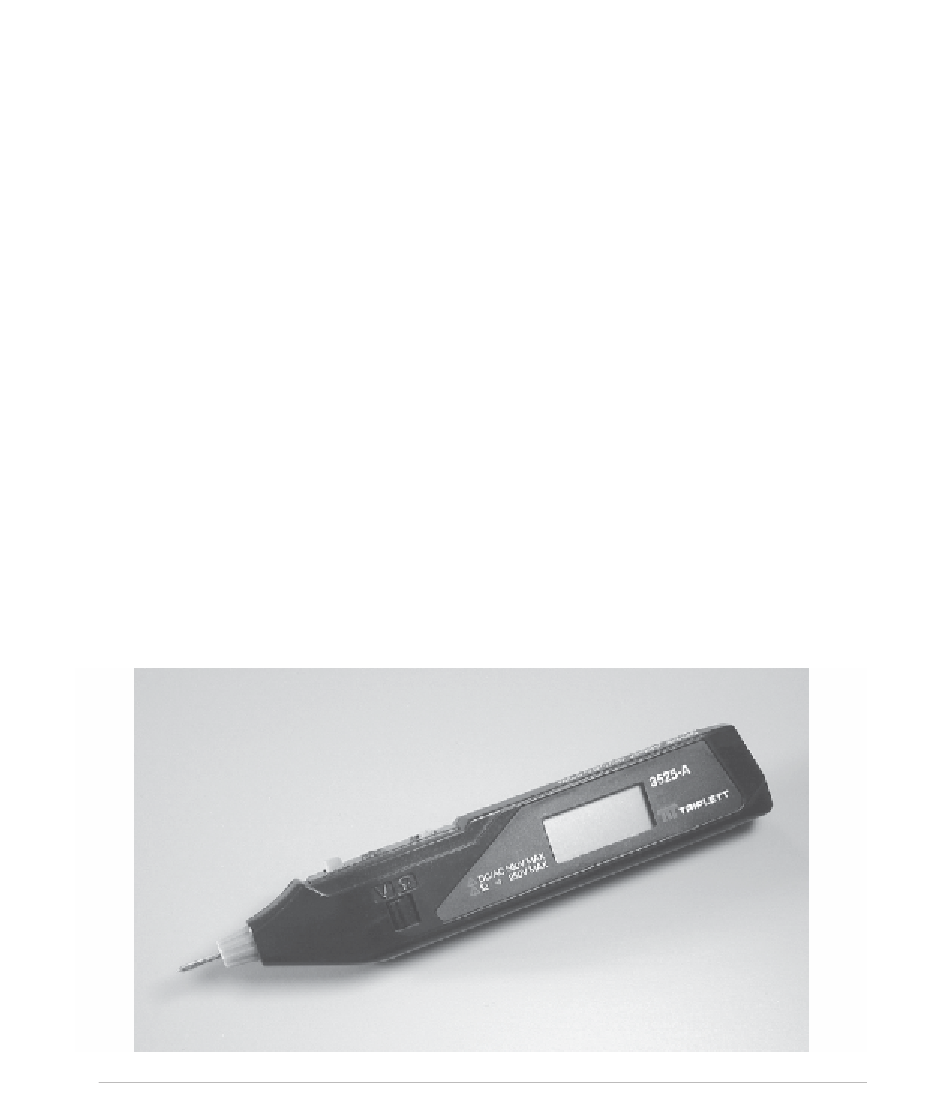Information Technology Reference
In-Depth Information
Voltmeters can make quite a few basic tests. For example, you can check con-
tinuity and DC resistance on a new reel of cable. If you know the resistance of a full
reel, you can easily estimate the remaining length from the DC resistance value.
With test adapters, you can check continuity of a jack, path panel, or patch cord.
You can make a few simple adapters, wrap-around plugs, and break-out cables to
help you use the meter for continuity and voltage measurements. You can also check
for potentially dangerous voltages that may exist on cables run between telecommu-
nications rooms or between buildings.
A type of voltmeter that is particularly handy in the field is the probe-style dig-
ital voltmeter. This type of meter, shown in Fig. 15.6, has the entire meter circuitry
and display in one oversized probe. The other probe is connected via a short wire
to the probe/meter. With this type of voltmeter, you do not have to find a flat sur-
face for the meter—it is right in your hand.
Beeper and LED continuity testers are also available and may be effectively
used to test wires and connections. Continuity testing merely verifies that an electri-
cal contact has been made, and does not really measure how good that contact is.
However, it is rare in these systems to get an “ohmic” contact (one that has a sig-
nificant resistivity). Because IDC connectors are used almost exclusively these days
in LAN wiring, the metallic wire is scraped clean of contaminants during the termi-
nation process and the actual point of contact remains virtually gas-free, eliminat-
ing oxidation of the contacting surfaces that would lead to increased resistance.
Dusty and corrosive environments are an exception to this rule.
FIGURE 15.6
This type of volt-ohm meter has the digital display in one oversized probe.

